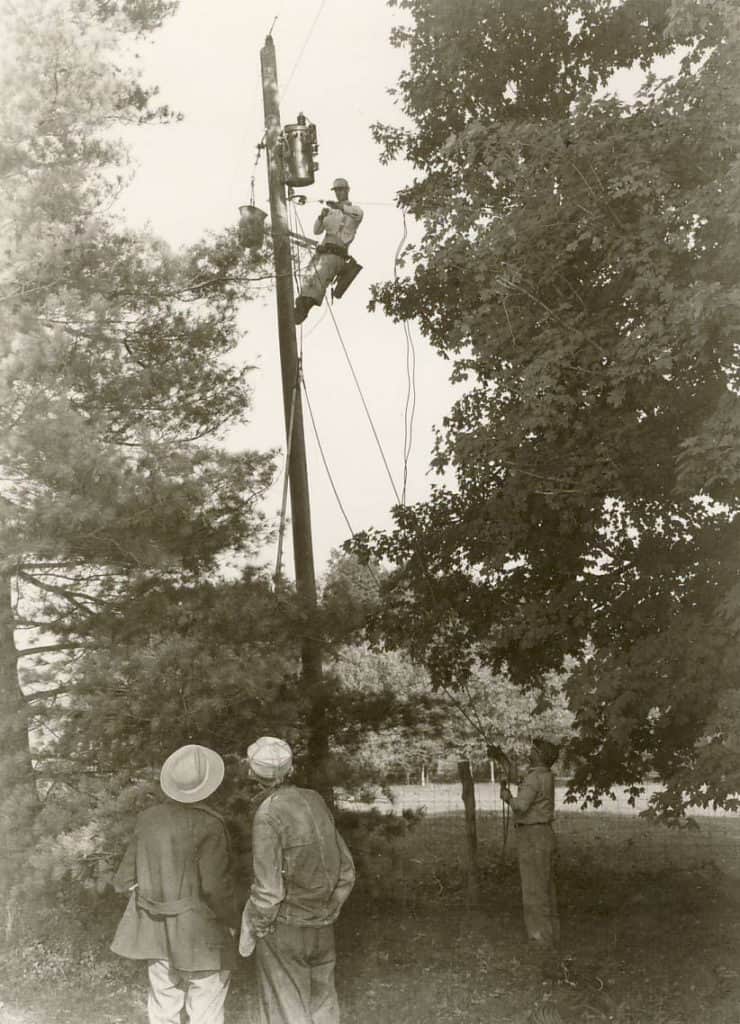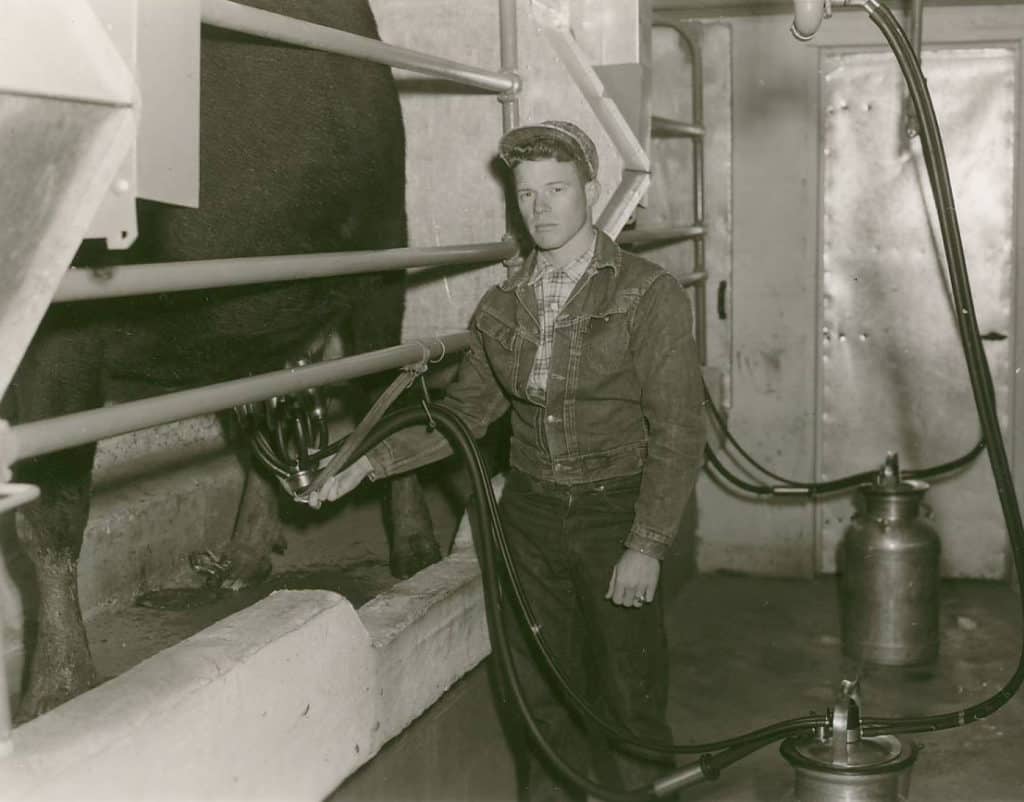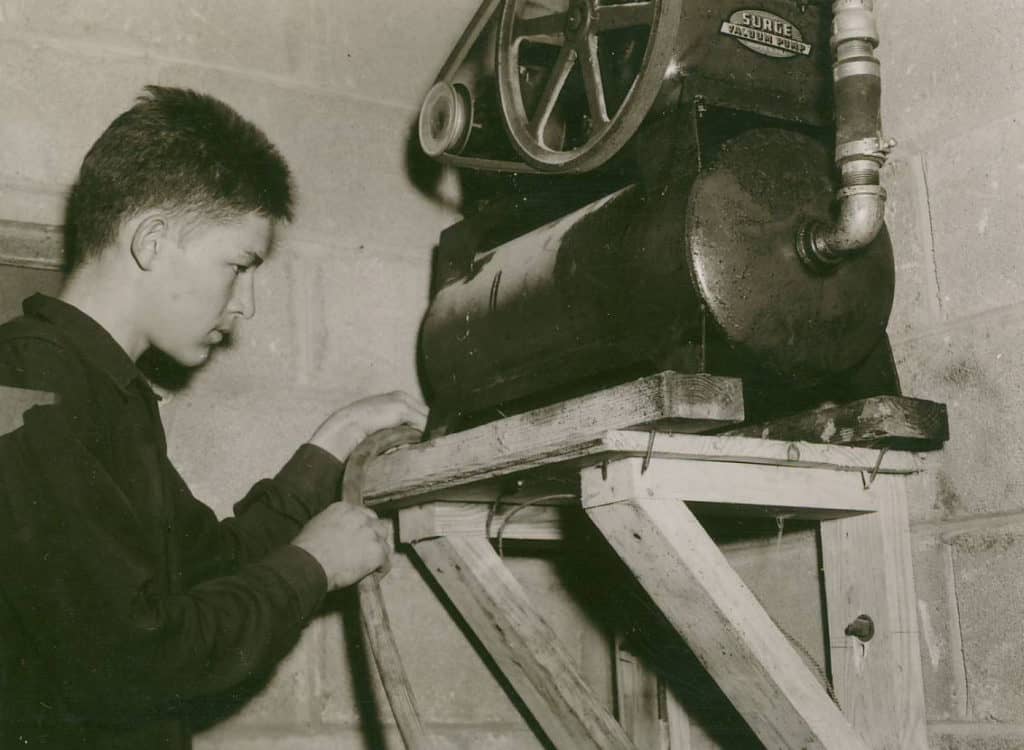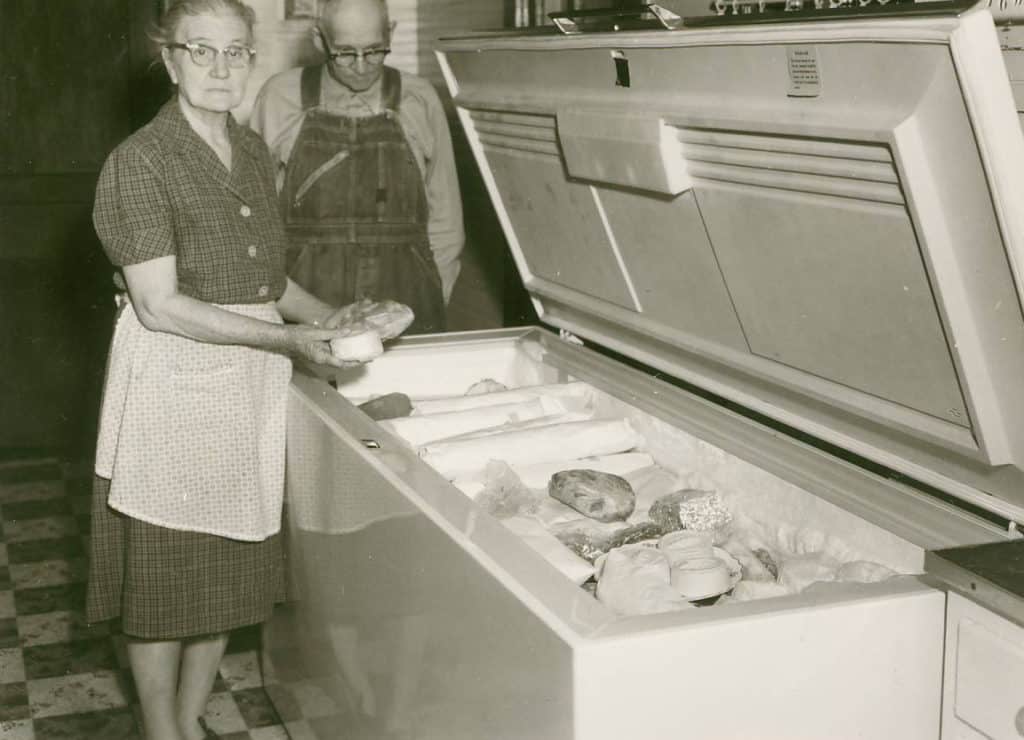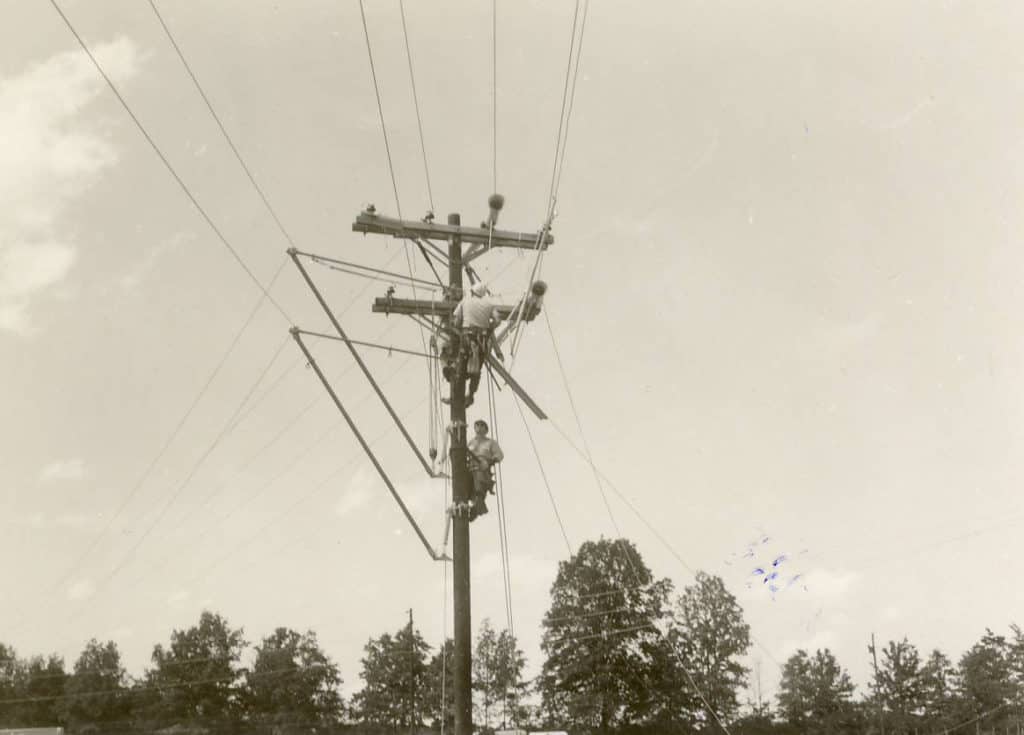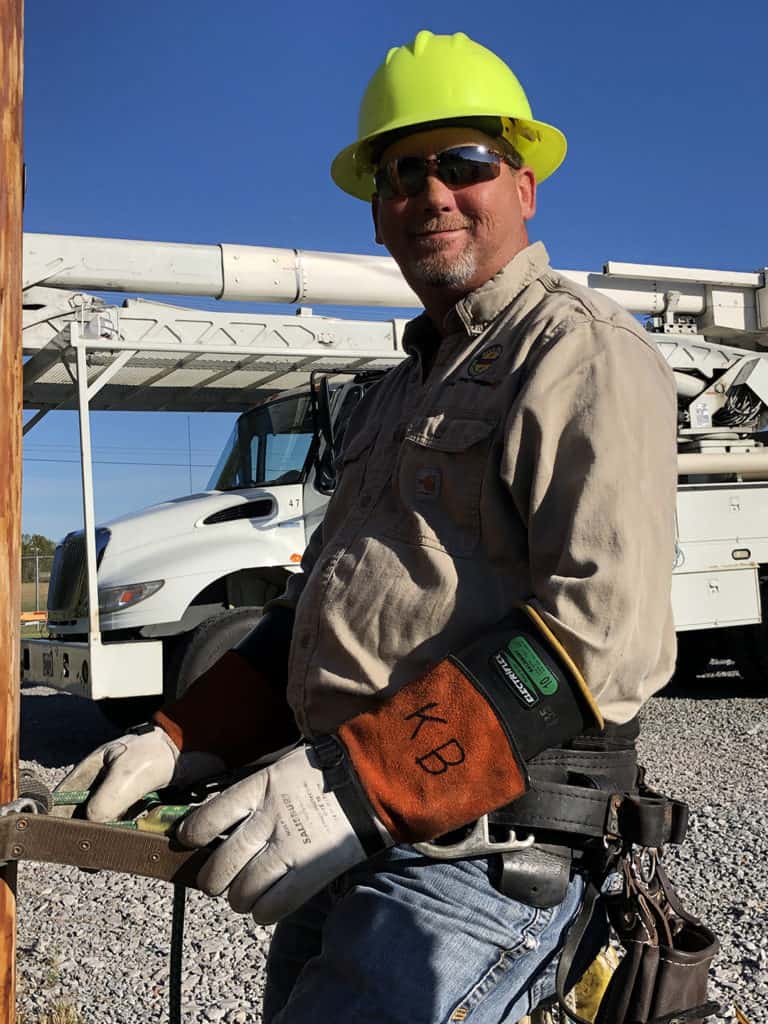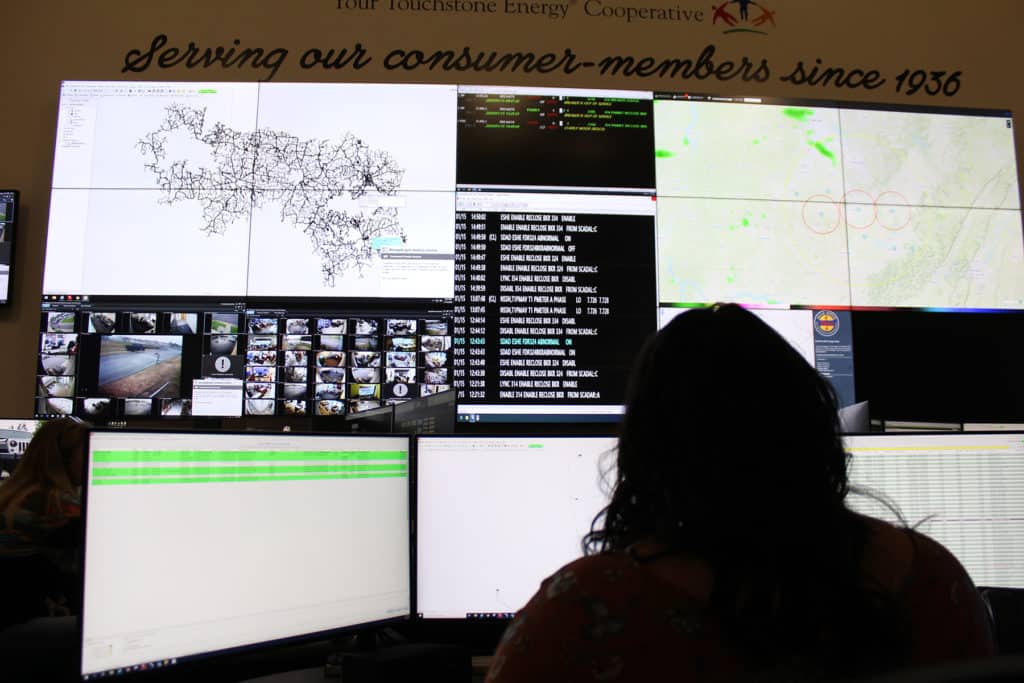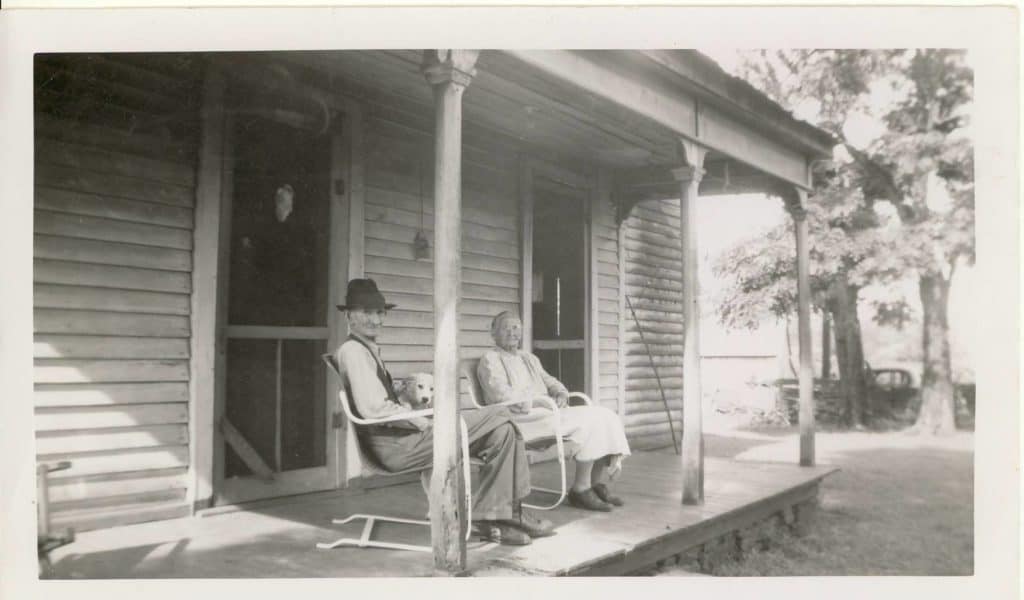 Even though the 1930s brought the Great Depression that rattled our country, it also brought electricity to rural countrysides, changing our landscapes and lives.
Even though the 1930s brought the Great Depression that rattled our country, it also brought electricity to rural countrysides, changing our landscapes and lives.
1933
With the establishment of the Tennessee Valley Authority (TVA) in 1933, Tennesseans had already begun to appreciate the power of electricity in more densely populated areas.
1935
Local visionaries wanted electricity and explored the option of cooperative electric distribution systems. President Franklin D. Roosevelt issued an executive order to create the Rural Electrification Administration (REA) to provide funding for utility groups who would serve rural areas. But the REA was not an overnight success. This was thought to be a radical idea and that citizens who lived in rural areas might band together to own utility companies. The same private investor-owned companies who refused to build power lines to the farms now 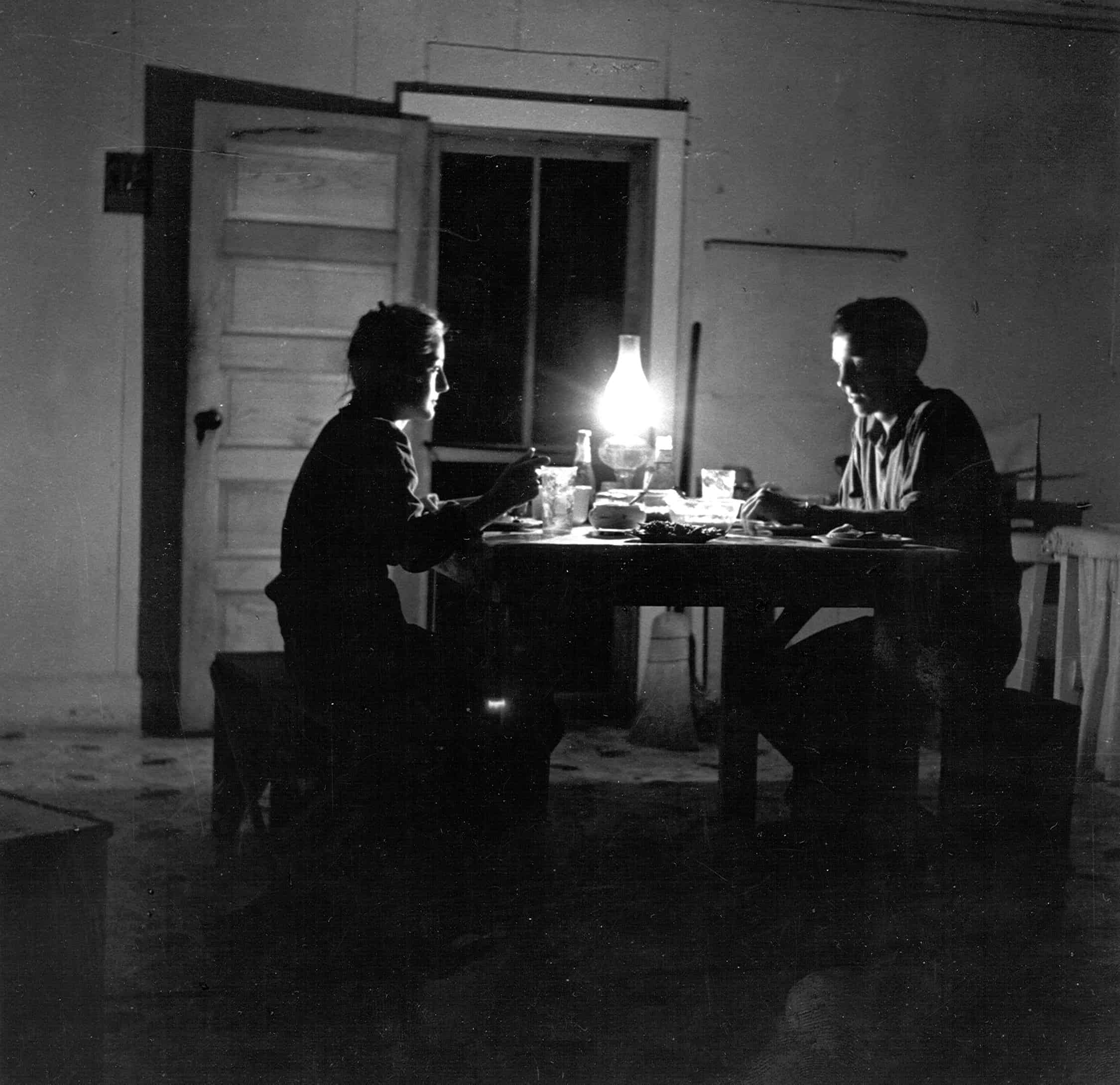 fought the idea that farmers might do it themselves.
fought the idea that farmers might do it themselves.
Bedford County residents were among the first to organize a not-for-profit electric cooperative: Bedford County Electric Membership Corporation. They elected officers and launched a concerted campaign to bring on members.
May 1936
The established electric companies were powerful and well organized, and Roosevelt’s executive order was largely ignored. In response, Roosevelt signed the Rural Electrification Act into law, setting up federal funding for loans that would guarantee a share of the future to rural Americans across the country.
The cooperative continued to grow as Marshall, Moore, Coffee and Franklin counties expanded its reach, which renamed the cooperative to become Duck River Electric Membership Corporation (DREMC). Soon, Maury County and portions of Giles County came on board to form DREMC’s current boundaries and shaping our 2,500 square-mile service territory from Columbia to Sewanee.
DREMC’s service area would continue to grow to include all or portions of 17 counties in Middle Tennessee: Bedford, Cannon, Coffee, Franklin, Giles, Grundy, Hickman, Lawrence, Lewis, Lincoln, Marion, Marshall, Maury, Moore, Rutherford, Warren and Williamson.
November 1, 1936
The first electric current was turned on at a member’s home! The vast possibilities of electric power were finally in the members’ hands. During this month, DREMC purchased its first-established electric lines from TVA and welcomed 386 cooperative members.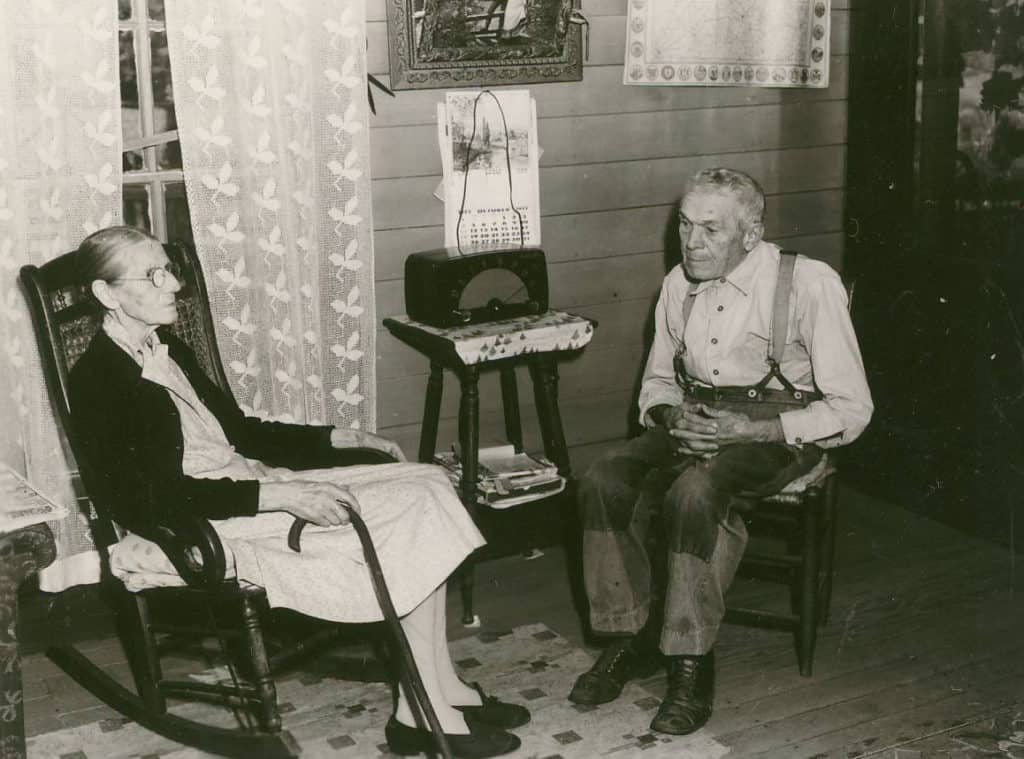
Soon, more and more people were going door-to-door, holding meetings in churches and tobacco barns. They argued the pros and cons of electrifying their homes and communities. Wasn’t electric power dangerous? Could it really save enough time and labor to be cost-effective? How would rights-of-way be secured if not every farm wanted power?
Proponents had their work cut out for them. The Great Depression was on, and the cost of a $10 membership fee and a $2 to $4 monthly bill was considered extravagant. Would the idea of forming, owning and running their own utility company become a reality? Through a purely grassroots effort, a vibrant volunteer spirit took hold and pushed forward.
Electric cooperatives began to form all across the country. Established using The Seven Cooperative Principles, each was forged under ideals of necessity and possibility.
August 1937
The cooperative secured its first REA loan of $379,000 to expand power line construction and negotiated a wholesale contract to purchase electricity from TVA. The cooperative was up and running, based on a successful business plan that is still in place today.
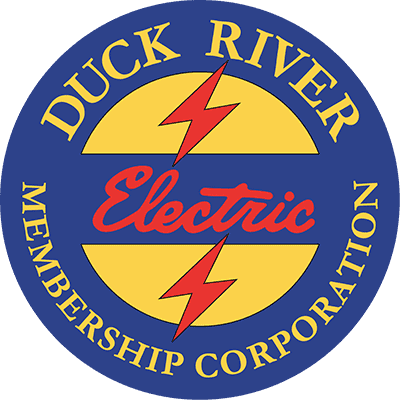

 Even though the 1930s brought the Great Depression that rattled our country, it also brought electricity to rural countrysides, changing our landscapes and lives.
Even though the 1930s brought the Great Depression that rattled our country, it also brought electricity to rural countrysides, changing our landscapes and lives. fought the idea that farmers might do it themselves.
fought the idea that farmers might do it themselves.
